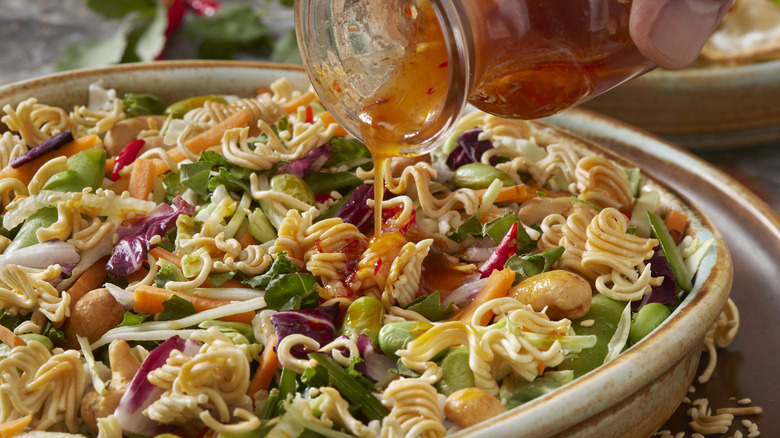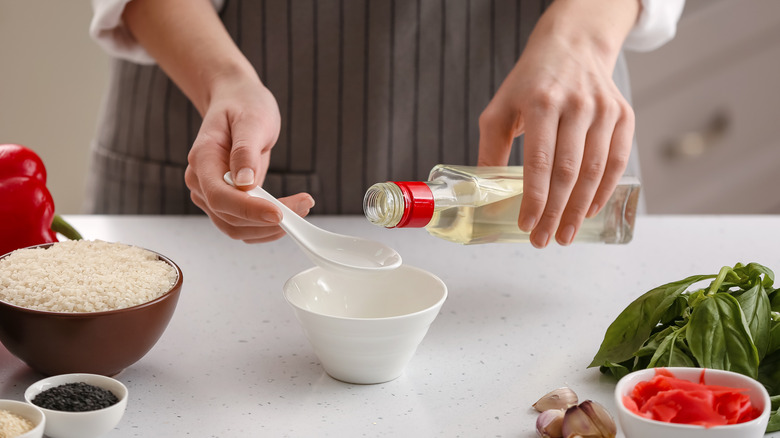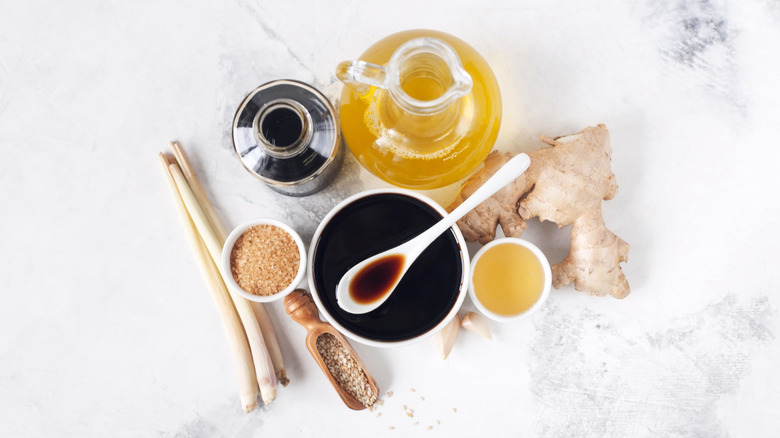Chinese Vinaigrette Is A Surefire Way To Bring Umami To Cold Dishes
If you've ever thought cold dishes seem a bit flat or one-dimensional flavor-wise, you might be missing umami without realizing it. Umami is a unique classification of flavor discovered by Japanese scientist Dr. Kikunae Ikeda in 1908. Known as the fifth taste (after sweet, salty, sour, and bitter), umami's flavor originates in the interaction of certain amino acids, nucleotides, and minerals in the food upon the tongue. Essentially, it's that meaty, savory richness that satiates, even in a lower-calorie dish.
Some common umami-filled ingredients you probably already have in your kitchen include soy sauce, fish sauce, mushrooms, tomatoes, and even leftover Parmesan rinds. But there are countless tasty additions you've probably never heard of, like Vietnamese nuoc cham sauce or furu, an umami-bursting fermented tofu product.
These days, one of our unconventional entries into the umami game is known as Chinese vinaigrette. If you're looking for a flavor enhancer to amplify a chilled side dish, this is it. Chinese vinaigrette goes perfectly on many cold dishes like a chilled noodle bowl or an Asian edamame salad.
What is Chinese vinaigrette made of?
Chinese vinaigrette is available at grocery stores and online, or you can make your own. Either way, the basic ingredients remain consistent: soy sauce, oil, vinegar, sugar, and added flavors or aromatics. Soy sauce is a well-known savory ingredient whether you are dressing an Asian-style salad or giving your tomato sauce an umami boost, and it definitely makes a strong appearance in this vinaigrette. There are actually many soy sauce varieties, but they'll all add that umami punch you're after, so use what you've got.
Next, you'll need an oil base for richness. Sesame oil is classic in Asian cuisine and even boasts some potential antioxidant and anti-inflammatory effects, so keep this oil stocked in your pantry for cold fare. Then, add a dash of vinegar for brightness. If you're not sure how to use different vinegar types, note that black vinegar reigns supreme for most Asian cold dishes. (Of course, black vinegar isn't available in every American grocery store, so you can substitute rice vinegar if needed.) A modest dose of sugar (or honey) rounds out the base ingredients of this vinaigrette.
As for aromatics and additional flavors, classic Asian cuisine favors ginger, garlic, star anise, cinnamon, and chili. Give any of these a try if you're making your own vinaigrette at home. The inclusion of aromatics varies from brand to brand for store-bought versions.
How to use Chinese vinaigrette
If Chinese vinaigrette is new to you, perhaps you're wondering what to do with it once you buy or make it. Fortunately, it's about as versatile as traditional European vinaigrettes. Like its Western cousins, this vinaigrette can accentuate almost any chilled dish containing vegetables, noodles, rice, or even fish and beef. Traditional uses include century egg salad, Sichuan chicken salad, or cucumber and asparagus dishes.
A bottle of this umami-filled sauce, whether store-bought or homemade, can be a huge timesaver when dinnertime is approaching. You'll probably notice that many Asian cold salad or noodle dishes call for the same base ingredients as our vinaigrette here contains. Instead of measuring out your oil, soy sauce, vinegar, and sugar separately for an individual recipe, like these Korean spicy cold noodles, you can douse on this delicious delicacy to taste straight from your bottle. When you need a refreshing yet satiating dish on a hot day, Chinese vinaigrette is a stone-cold winner.


